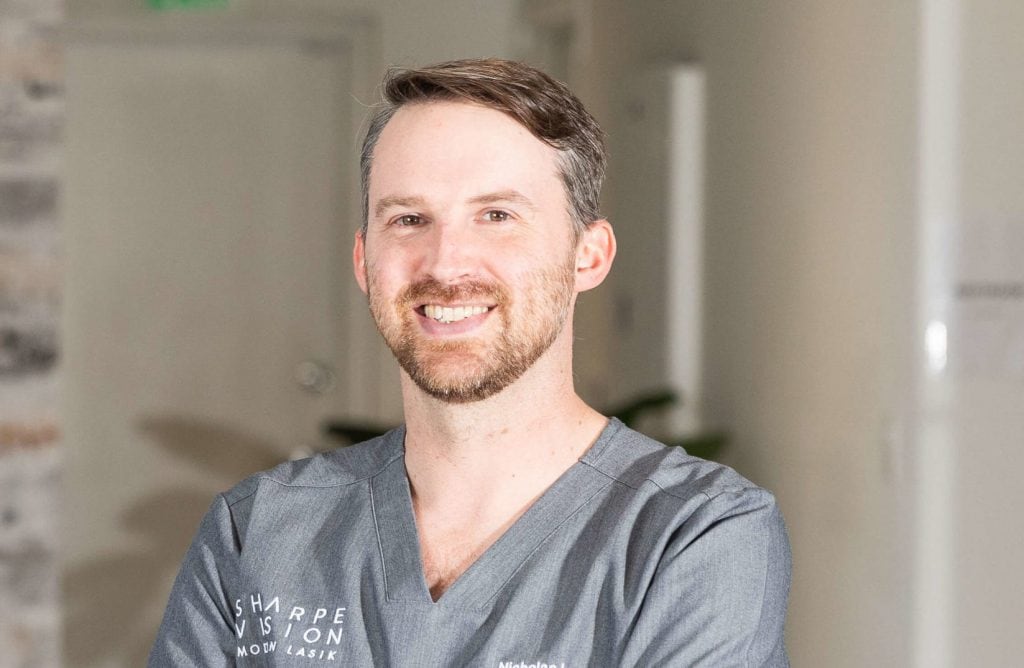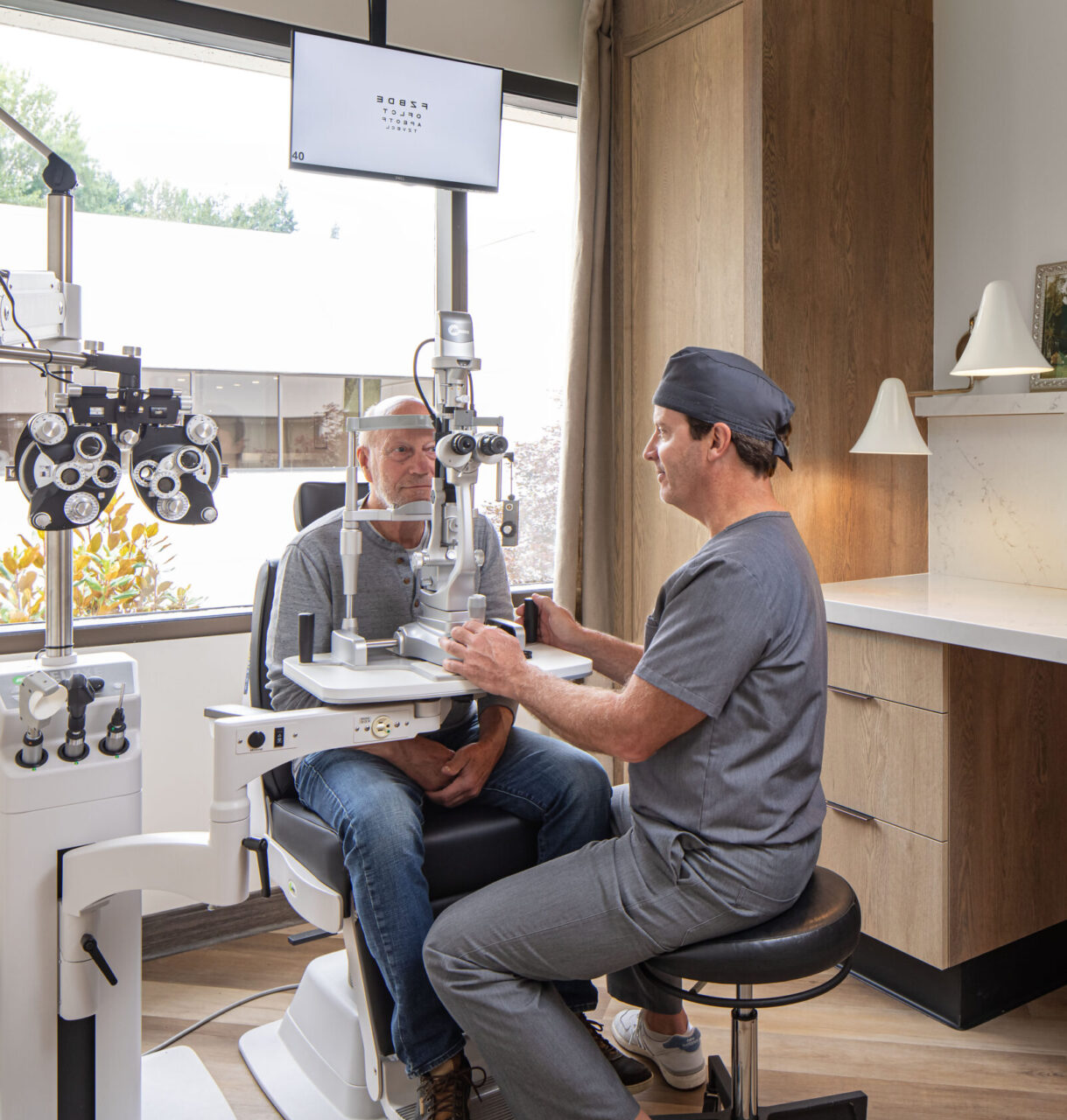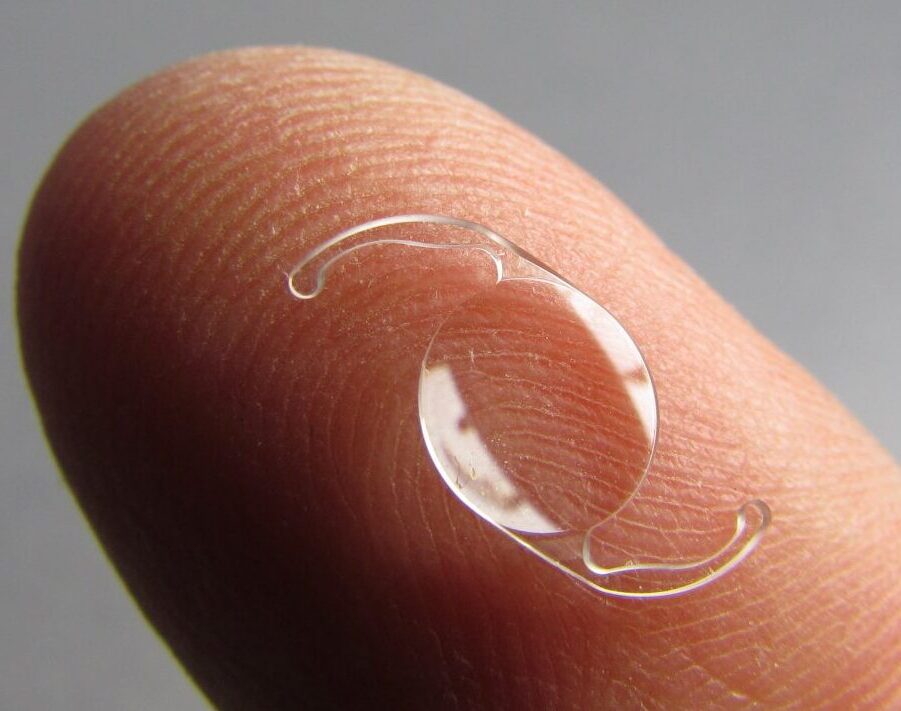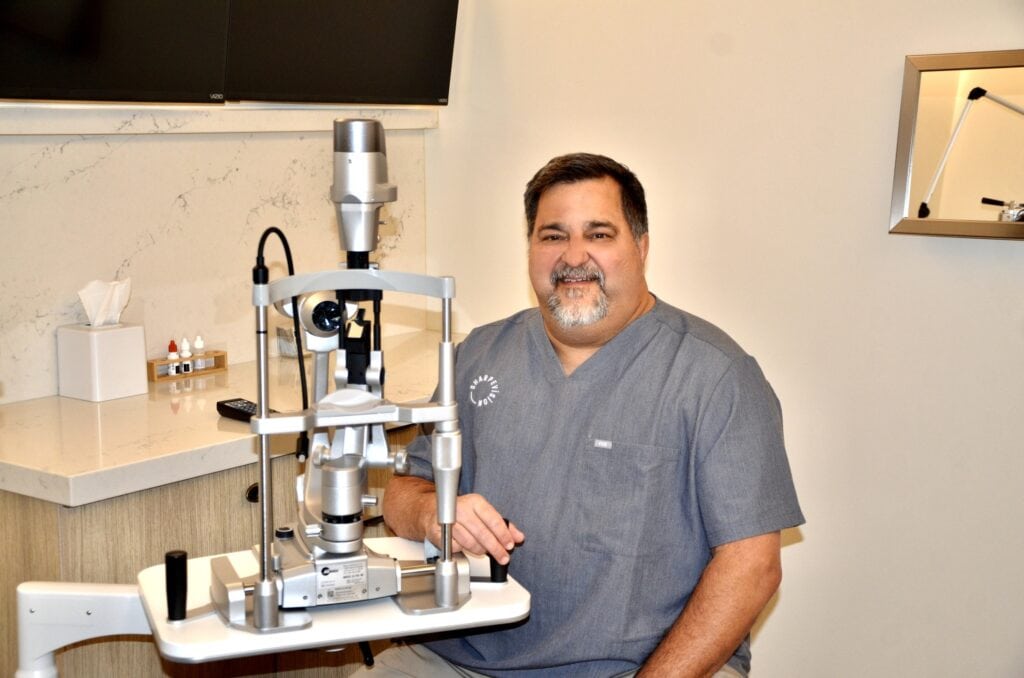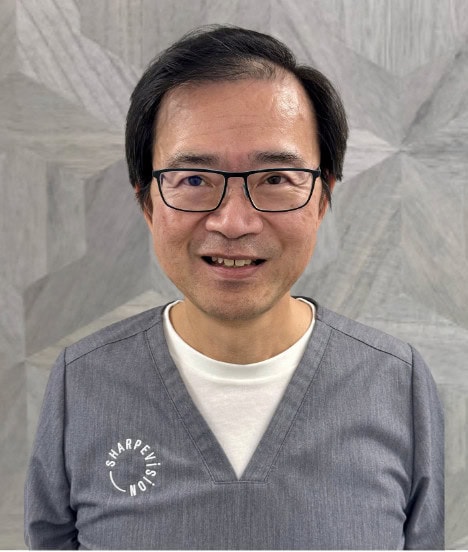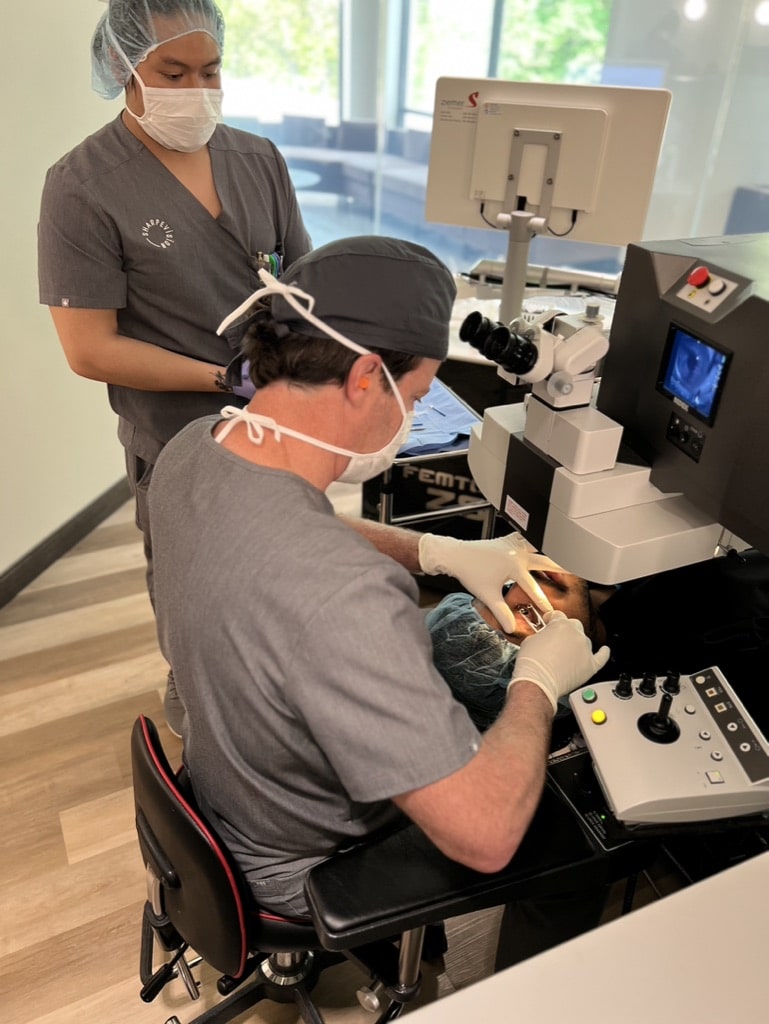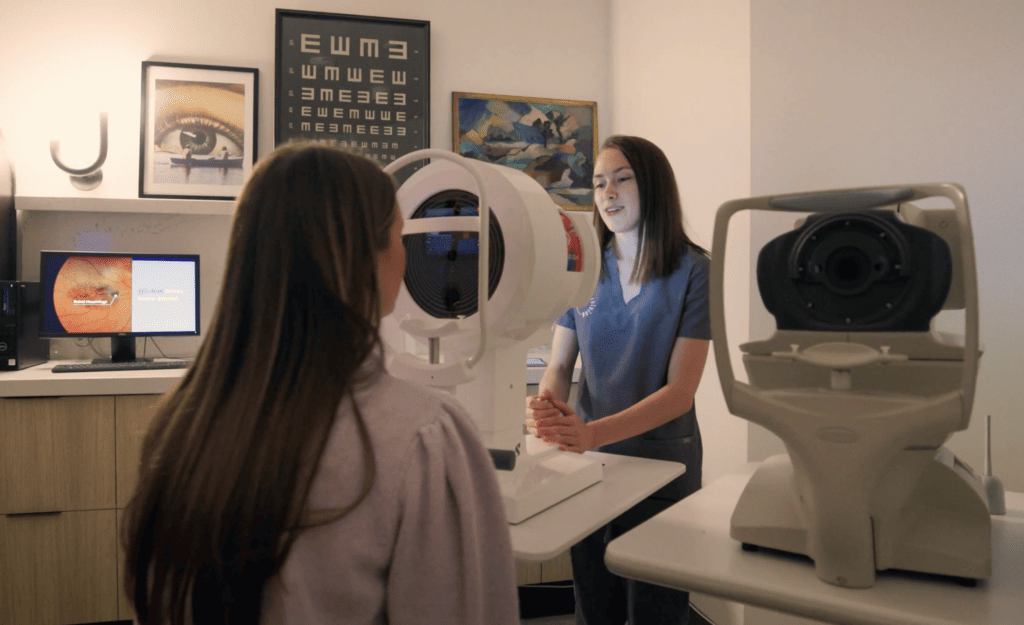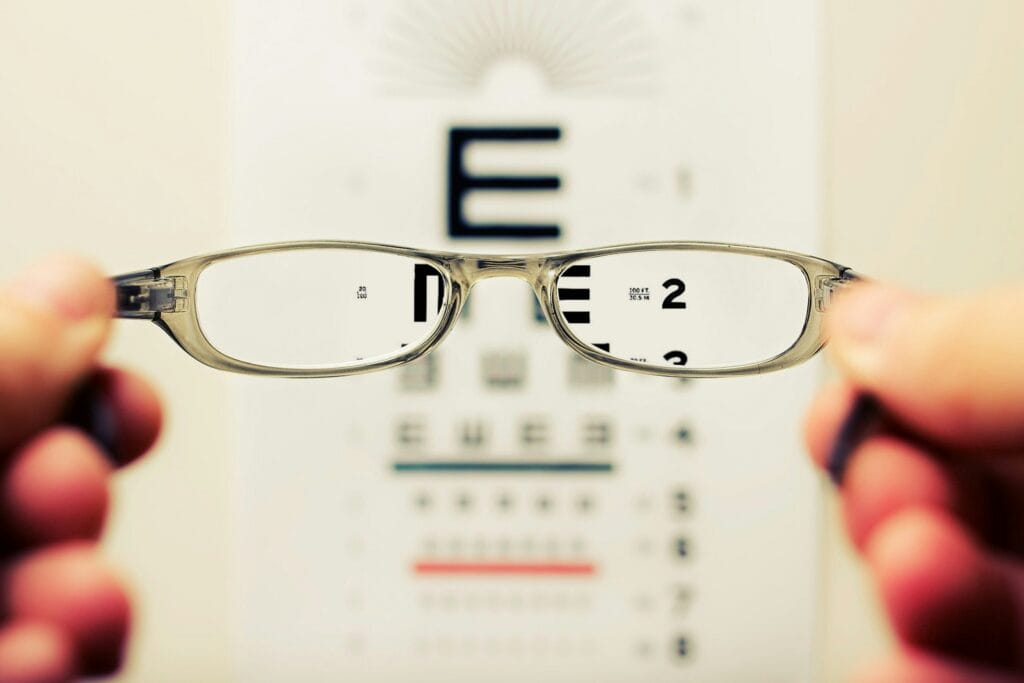Comprehensive Exam
A comprehensive, dilated Cataract examination is the only way to know if you have Cataracts. Your medical insurance can cover a portion of the cost of your consultation & surgery, so please bring your insurance information. Depending on your specific insurance benefits, you may have a co-pay due at the time of your consultation. While your exam involves 3D diagnostic testing, it is also our opportunity to learn more about you, your expectations & your lifestyle. All of these factors play an important role in recommending the best lens replacement for you.
The complete exam can take up to 90 minutes. After all the data is collected, your doctor will give you an eye exam, discuss the treatment recommendation, discuss various lens implant options that may eliminate glasses after cataract surgery & answer all your questions. Your visit will include dilation of your pupils, which will affect your eyesight for about 4-6 hours, as you may have experienced with a routine eye exam.
Before Procedure
If you are diagnosed with a Cataract, you will be scheduled for your IOL (intra-ocular lens) measurement appointment. Because every eye varies in size & shape, we need to use advanced 3D imaging equipment that builds a 3D map of each eye & tailors the lens & treatment to that map. This mapping technology allows your surgeon to create a customized treatment plan that matches the uniqueness of each of your eyes. Yes, they are different! Your doctor will also go over the IOL types that are available for your eyes & the cost of each, so you can make an informed decision.
Day of Procedure
If you are in Seattle, your surgery will be performed in our own state-of-the-art surgery suite. If you are in Austin, your surgery will be performed at Center for Specialty Surgeries. When you arrive, you will be checked in and asked to sign an informed consent document. You will also receive a Recovery Kit with all your prescription drops & everything you need for after your procedure. No trip to the pharmacy! We’ll provide specific instructions on how to use the drops, go over questions & schedule your next day post-op appointment.
Next we will put eye drops in your eyes to prepare them for the surgery. Depending on your surgery location, you will be given an oral sedative or an IV to help you relax.. Most people feel sleepy during the procedure. Eye drops are used to completely numb the eye—no needles are used at all! Your surgeon will use the laser to create a circular opening for accessing and removing the Cataract. This opening is about 10 times more accurate than what is achieved by hand. The laser then softens and breaks up the hard cataract for a gentler, safer & easier cataract removal. The new IOL is inserted into the opening and the procedure is complete!
Post-Procedure
After your surgery, you will spend a short period of time resting in the outpatient recovery area before you are ready to be driven home. You should expect to have blurry vision & mild soreness after the procedure, but you will be able to see your doctor the very next day at your SHARPEVISION location.
